Akústísk hönnun - Hljóðfræði IB
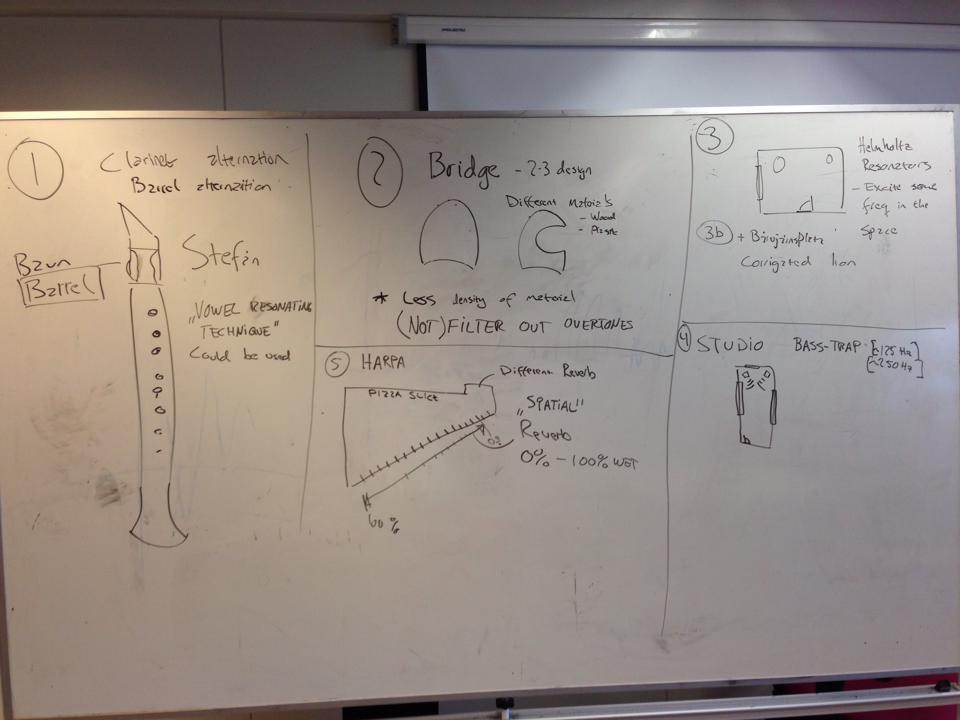
Akústísk hönnun: samtal tónlistar og verkfræði
Samtstarfskúrs verkfræðideildar Háskóla Íslands og Tónlistardeildar Listaháskóla Íslands í umsjón Halldórs Úlfarssonar, hljóðfærahönnuðs og Þráins Hjálmarsson, tónskáld og hljóðfærahönnuð.
Grunnupplýsingar: Unnið er útfrá hljóðhegðun hluta (e. acoustic properties) og rýma og kynntar sem mótanlegur miðil til listsköpunar. Farið er, með fyrirlestrum og samræðu yfir sögulegt vægi hannaðrar hljóðhegðunar í listum og fá innsýn í nýlegar rannsóknir á þessu sviði, m.a. í kynningum á verkefnum leiðbeinenda og fyrirlesara námskeiðisins. Í áfanganum verður unnið með nemendum verkfræðideildar Háskóla Íslands að útfærslu samstarfsverkefnis þar sem sett verður fram ætlun um hljóðhegðun hlutar eða rýmis útfrá listrænni hugmynd og útfærslan útfærð með aðstoð greiningartækja og verklags verkfræði.
Nemendur öðlast reynslu í að móta hugmynd um hljóðhegðun og fullvinna í samstarfi við verkfræðinema þar sem útkoman verður áþreyfanleg, eða kannski frekar áheyranleg, í listaverki.
Áfangalýsing
Reading material
Text on architecture and sound
Hearing Architecture - article by Steen-Eiler Rasmussen, published in the book Experiencing Architecture in 1959
Influence of buildings on musical tone - article by Hope Bagenal
An Acoustic Questionnaire for Organists - article by Hope Bagenal
Text on instruments
On clarinets - From the book Musical Instruments - History,Technology, and performance of instruments of Western Music by Donald Murray Campbell, Clive Alan Greated and Arnold Myers.
On violins - From the book Musical Instruments - History,Technology, and performance of instruments of Western Music by Donald Murray Campbell, Clive Alan Greated and Arnold Myers.
Diary from lessons - Autumn 2013
First lesson
Lecture by Þráinn Hjálmarsson - introduction to the course and the possibility within the framework of the collaboration with the Engineering students at University of Iceland.
Lecture by Þráinn Hjálmarsson - Introduction to the course
WEBSITE: Overview of the development of Thranophones - Electro-acoustic instrument
Second lesson
Lecture by Halldór Úlfarsson - Lecturing on his own interest in music instrument design.
Lecture by Halldór Úlfarsson - Introduction to sound art
WEBSITE: About Halldorophones - Electro-acoustic instrument
WEBSITE: Development stage of Halldorophones
VIDEO: Lecture by Halldór Úlfarsson on Halldorophones - Lecture at Institut für Raumexperimente [second from top]
Third lesson
Lecture by Hans Jóhannsson - violinmaker.
VIDEO: Lecture by Hans Jóhannsson - Lecture at Institut für Raumexperimente [third from top]
VIDEO: Lecture On Sound - Lecture "On Sound" by Hans Jóhannsson at Institut für Raumexperimente
INTERVIEW [In Icelandic]: On a new Cello - developed by Hans Jóhannsson and Hildur Guðnadóttir Ingveldadóttir
Fourth lesson
The Alvin Lucier's piece, I am sitting in a room was the main focus of the work, making some audio feedback through the spaces at the Academy of the Arts.
Alvin Lucier - I am sitting in a room (1969) - Score of the piece
Alvin Lucier - Music for Pure Waves, Bass drums and acoustic pendulums - Score of the piece
MAX 5 PATCH: I am sitting in a room in 7 steps - Patch where it's possible to record each re-recording separately
Fifth lesson
Visit to Harpa Concert Hall
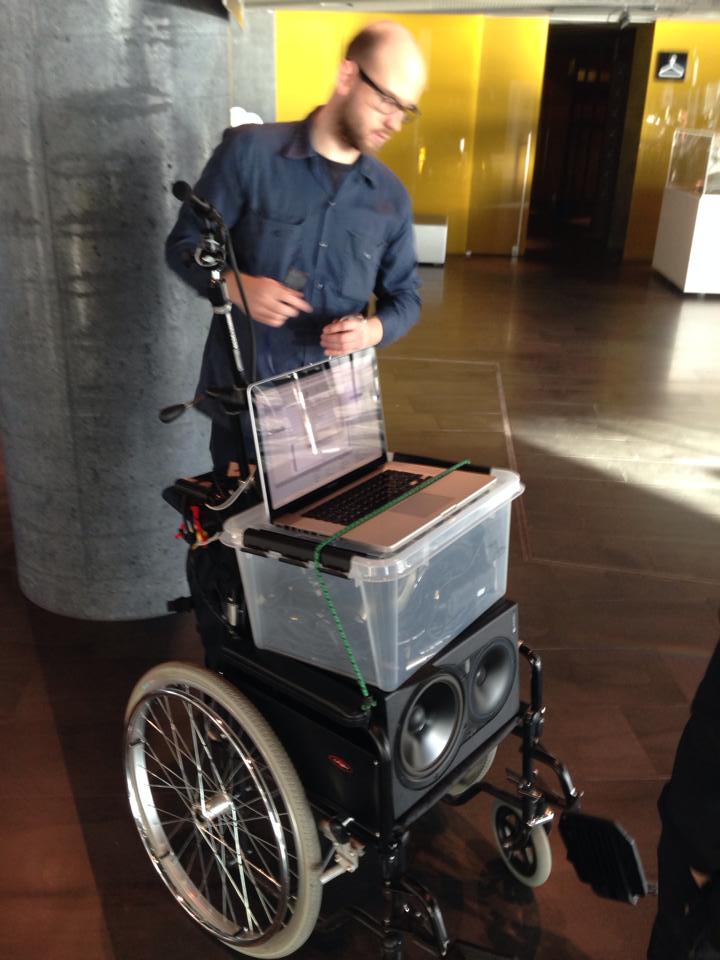
Halldór and "the moveable frequency measurement unit"
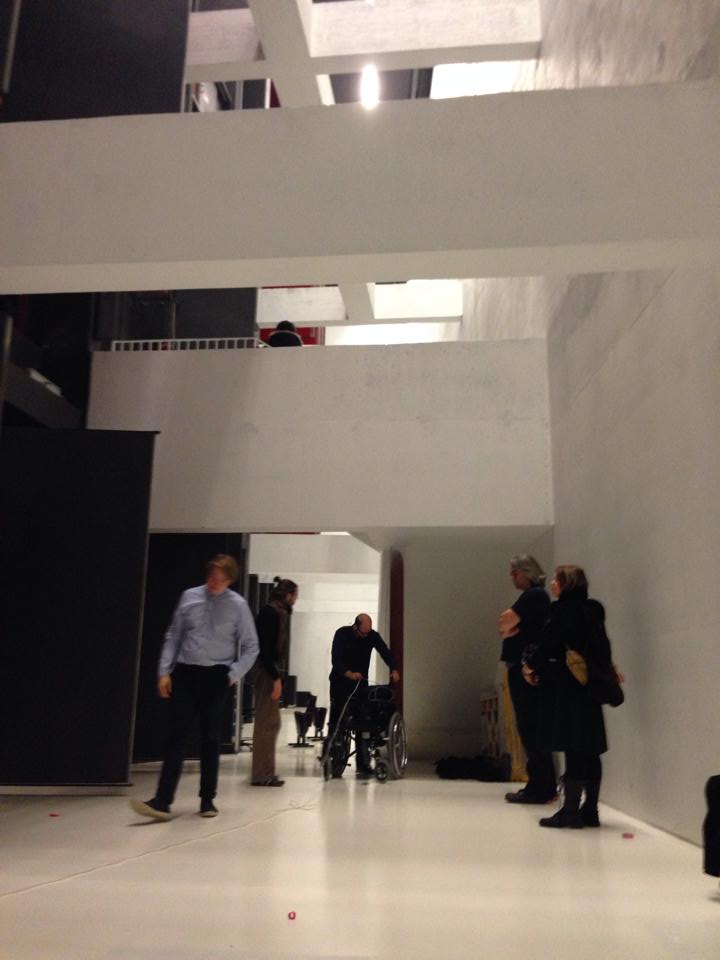
Photo taken inside the Reverb chamber on the west side of Eldborg concert Hall
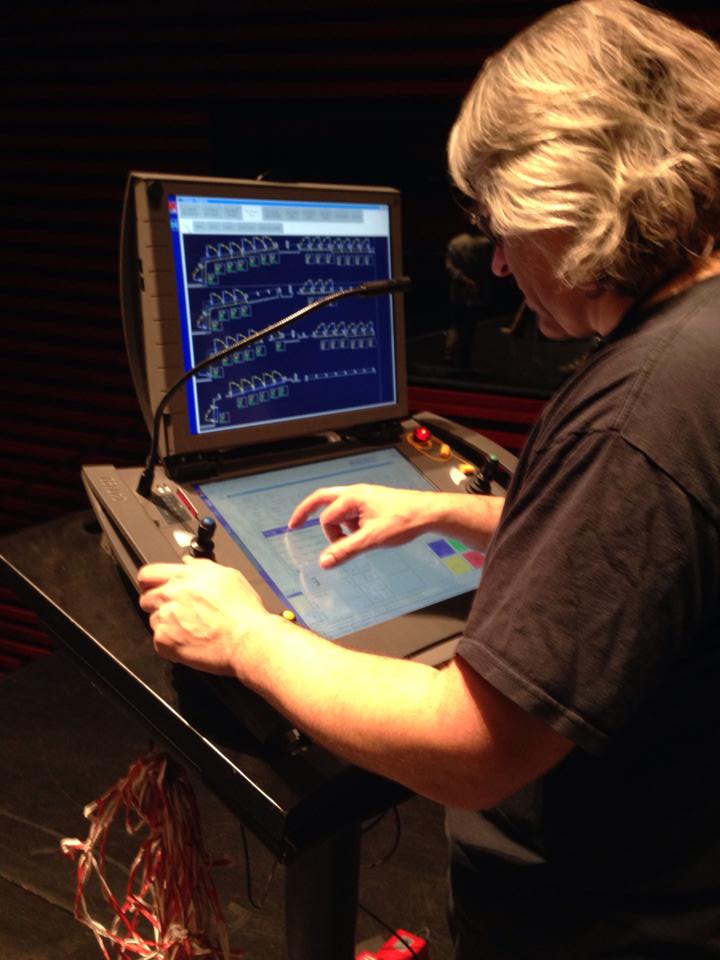
Einar Rúnarsson - our guide to the house, working on CAT 192, controlling the sound in the concert hall
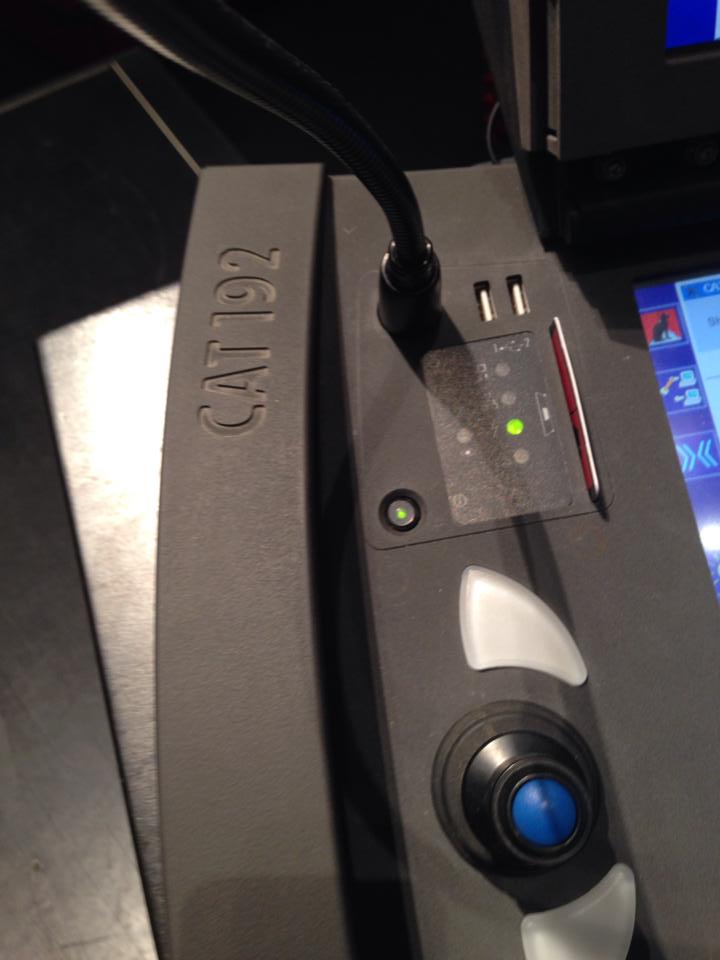
"The Cat"
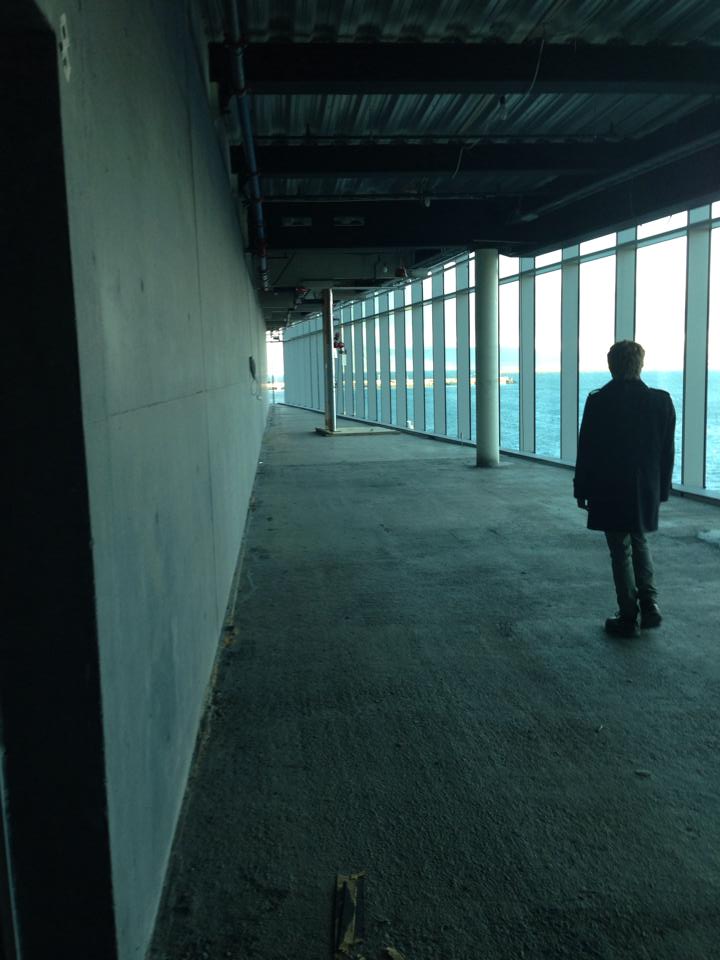
"The Pizza Slice" - photo taken in the wetter reverb spot
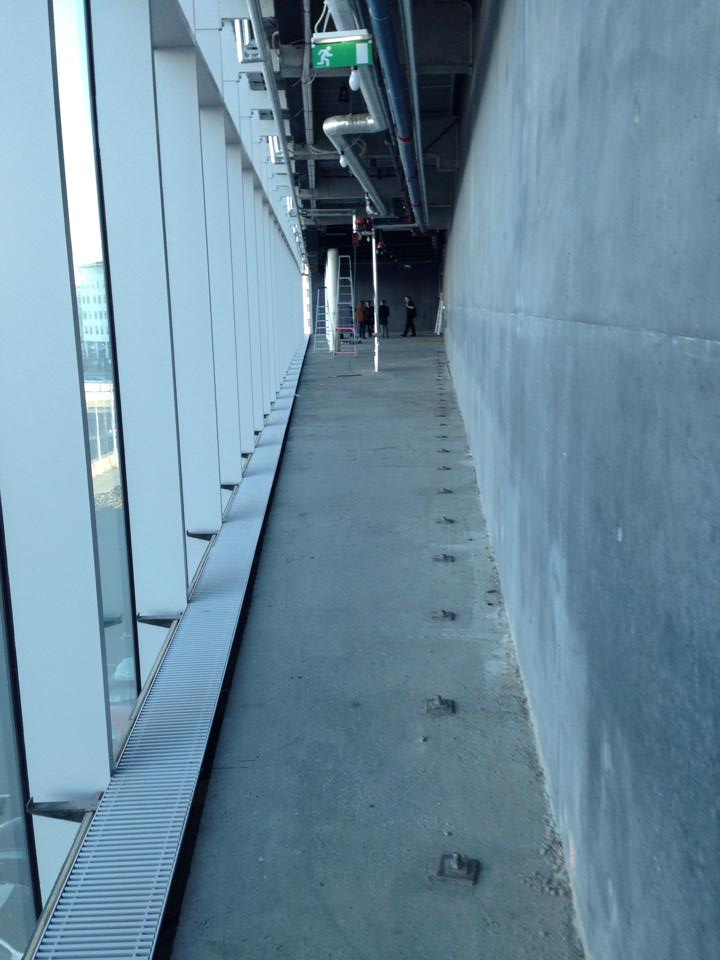
"The Pizza Slice" - photo taken in the dryer reverb spot
THE PIZZA SLICE - Was interesting as an acoustic space, where the reverb of the sound got dryer when listening in the end where the windows are closer to the walls, the result is some sort of "linearity" in the space. An ear-opener to acoustics and is possible to work further on.
ELDBORG - The concert hall had a surprisingly flat response in frequency measurements and controlled opening (with the computer CAT 192) into the Reverb chamber resulted in no drastic change in the frequency response measurements.
Seventh lesson
Meeting with Dr. Fjóla Jónsdóttir and Dr. Rúnar Unnþórsson, professors at the University of Iceland, getting further information on what could be done with the engineering students in the given time frame.
Eighth and last lesson
Last preparation before opening the conversation with the Engineering students - 2 projects were focused on, the "Cello Bridge" designing and "Practice room in C Major". Other project that will be done without the income of engineering students is the work on a Clarinet barrel.
Projects - Autumn 2013
Cello bridge
CELLO BRIDGE - Project description [in Icelandic]
-
1) Task is to model a flat chair with no cuts from [just a solid body] and compare the computer results to a made object, that Hans Jóhannsson, violinmaker, will make the physical object
2) Use the computer model to "cut out" wood from the flat chair-like until the maximum cut-out possible is reached (strength-wise)
DOCUMENTS for Engineering students: Computer Models for Ansys - Drawing of a Cello chair for computer modeling.
____________
Final Report on the project [in Icelandic]
"Brúarsmíði" - Powerpoint presentation of the report in Icelandic
"Practice room in C MAJOR" (ísl. „Skemmdarverk í C-dúr“)
C MAJOR - Project description [in Icelandic]
One of the practice rooms at the Academy of the Arts (fourth floor) has a peaks in resonance at the following frequencies
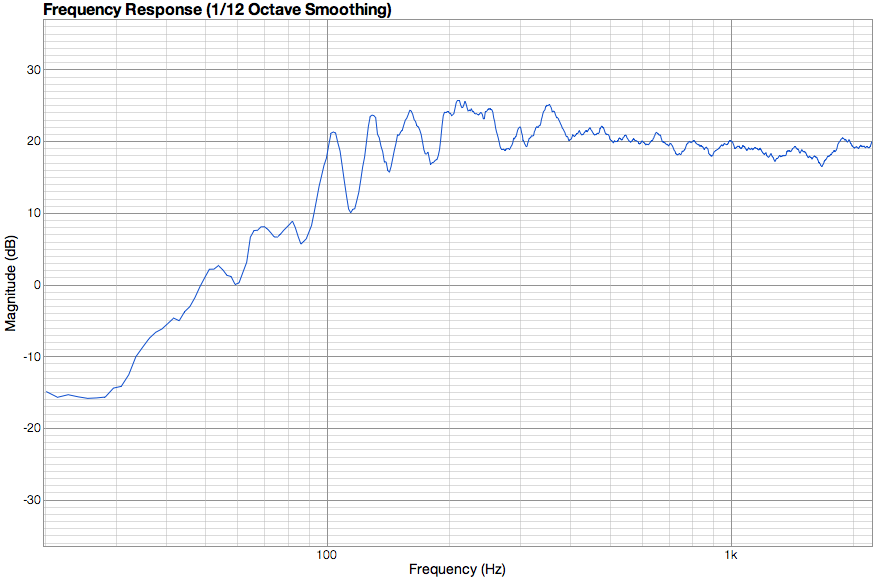
DOCUMENTS for Engineering students: Computer Models for Ansys - Drawing of the space at the Academy of the Arts for computer modeling
Extra project: Clarinet barrels
[EXTRA PROJECT] New clarinet barrels
C MAJOR - Project description [in Icelandic]
A more hands-on project, where the conversation between engineering students is not the main focus, but the project needed a try out and possible within the resources of the course.
Designing a new Clarinet Barrel, trying out for example
-
1) How a plastic 3D printed Barrel would effect the timbre of the instrument - variables: the density of a plastic printed object is not the same as having a solid plastic material, using plastic material instead of wood
2) How the shape of the Barrel can effect the timbre of the instrument - spherical space
3) How the shape and a longer barrel (then alternating the fundamental putch of the Clarinet, therefore alterning the key grips) effects the instrument
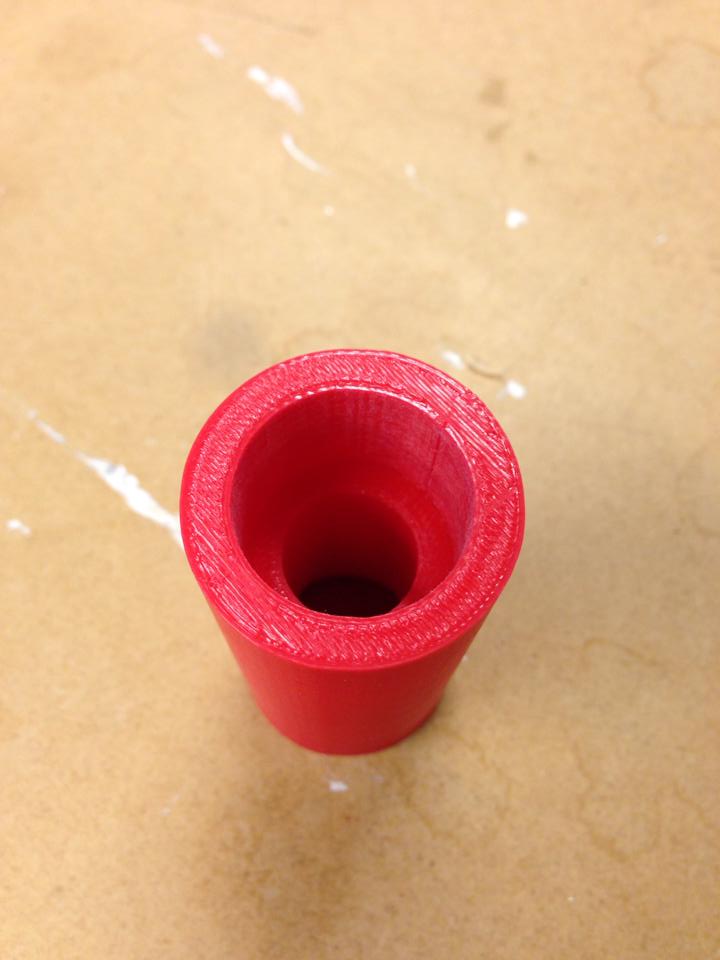
"Plastic barrel" - Plastic printed Clarinet Barrel in standard length
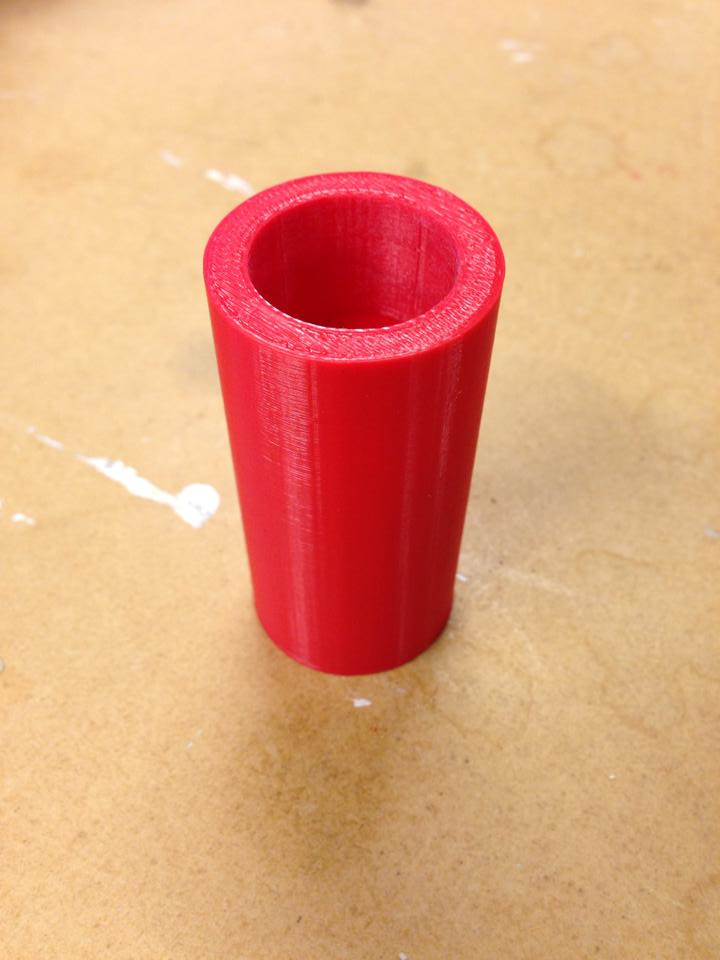
"Plastic barrel" - Plastic printed Clarinet Barrel in standard length
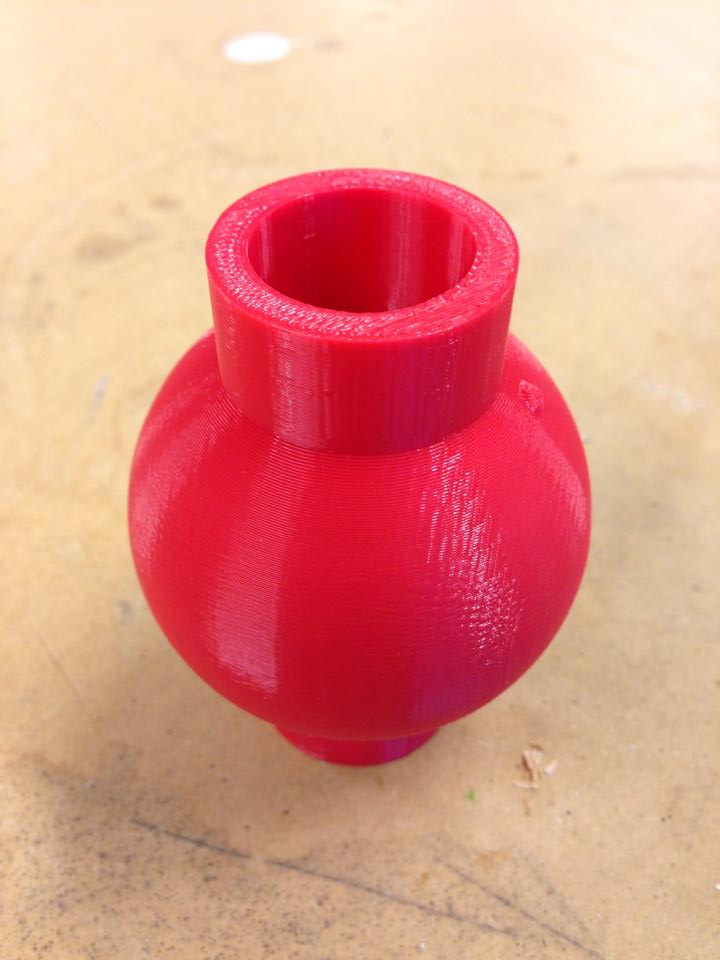
"Spherical barrel" - The length is longer than a standard Barrel, it has a spherical volume inside
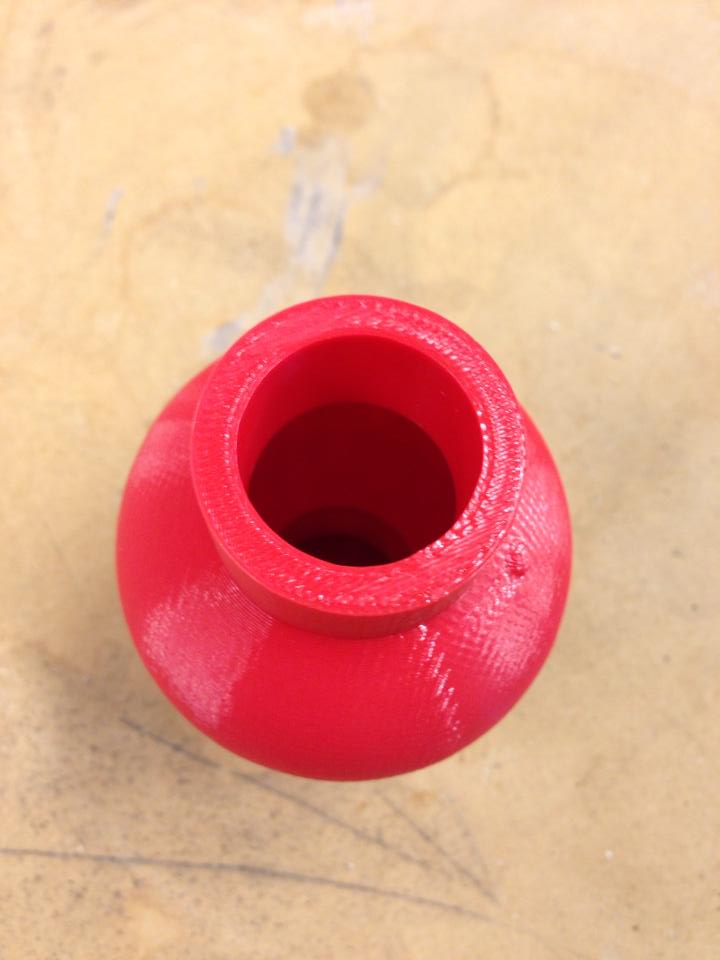
"Spherical barrel" - The length is longer than a standard Barrel, it has a spherical volume inside
RESULTS
STANDARD BARREL - As predicted the standard barrell which no change of the inner design resulted in a standard sounding Clarinet. Minor flaws were involved in the size of the holes that connects to the mouthpiece and the clarinet.
SPHERICAL BARREL - The Spherical Barrel has a high Q on one frequency and overruns the resonance in the clarinet itself, therefore the clarinet only can do this one tone with a slight color changes of that tone by using the keys of the instrument.
Special interest is that if a tone is made with the clarinet mouthpiece alone and then moved in front of the spherical barrel, the tone alters up a whole tone.
Further tryouts - Using Vowel resonating prediction in terms of shaping the barrel
The plan is to use the VOWEL application by Paul Falstad to reshape the Clarinet Barrel, the inside parts of the barrel that affect the sound are 30 mm long and widest diameter possible is 14 mm. Additional to these 30 mm there are 18 mm on each site in use to connect the mouth piece and the clarinet. The total length of the barrel is hens 66 mm.
The Third and Fourth 3D printed tryouts will be taken from the same shape, but where it's not symmetrical shape the fourth print will be the "opposite" of the third one. See drawings below.
The inside of the 30 mm space inside the Barrel - based on a standard vowel resonator
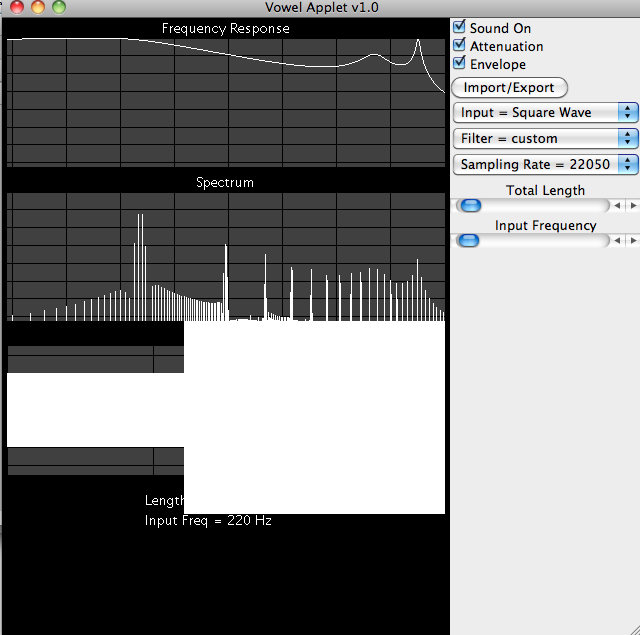
The VOWEL application's prediction to the frequency responce of the barrel
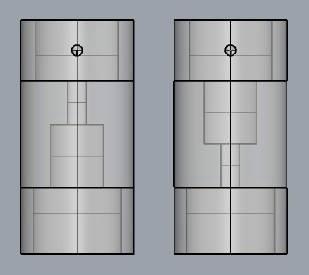
Inside of tests #3 and #4 - #4 is the inverted version of #3 - mouthpiece of the clarinet goes in at the top
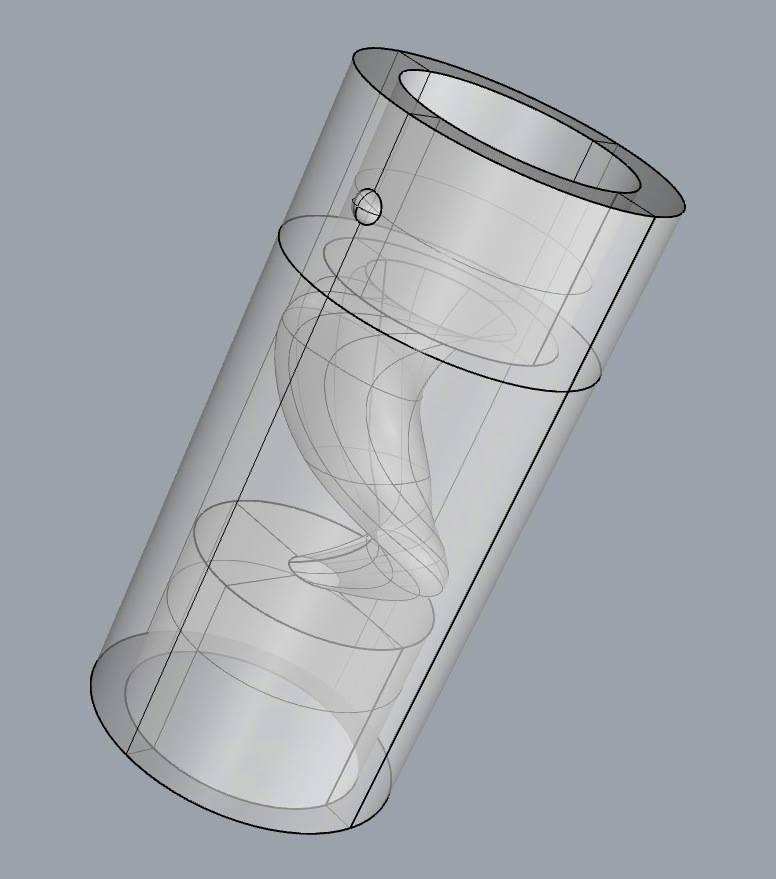
Freehand design where the larger gap slowly gets smallare and the length of it is made longer by doing curls
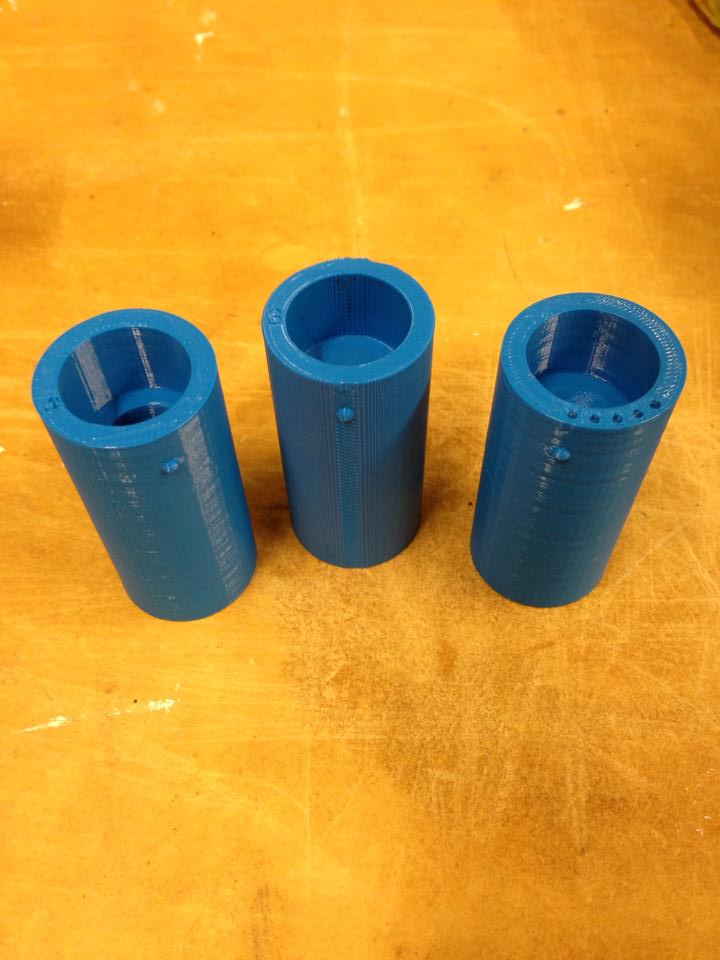
Printouts for the tryouts, from left: #4, #3 and #5
New Years concert of S.L.Á.T.U.R
Sound example of new clarinet barrels
The New Year's concert of S.L.Á.T.U.R, was held in Mengi, Óðinsgata 2, 101 Reykjavík, 10th of January 2014 and was dedicated to prepared clarinets. Composer Guðmundur Steinn Gunnarsson wrote a piece in 3 movements with 4 prepared clarinets, using the latest version of the barrel. An excerpt from the work is audible below.
Sound example of recent barrel tryouts. Recording of a work by Guðmundur Steinn Gunnarsson for 4 prepared clarinets. Performers: Grímur Helgason, Kristín María Gunnarsdóttir, Sigurjón Bergþór Daðason, Stefán Ólafur Ólafsson. Recording made by Jesper Pedersen
Projects - Spring 2014
Cello bridge
Development of a cello bridge for tryouts, with Hans Jóhannsson violin maker, we defined 4 shapes of cello brigdes, based on predictions on how the modes of the bridges would behave (see further: modal analysis). 4 different chairs were made in the first lesson. Tryouts will be done in 3rd lesson.

Four differently shaped cello brigdes as that was a result group discussion.
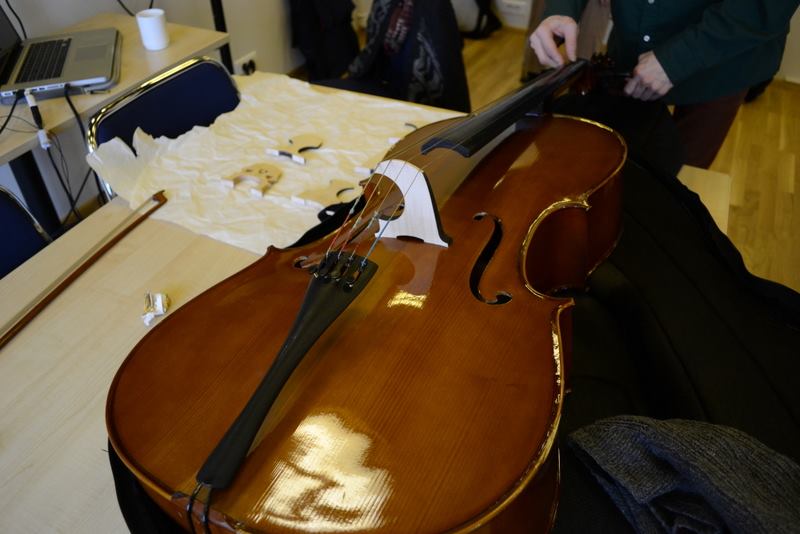
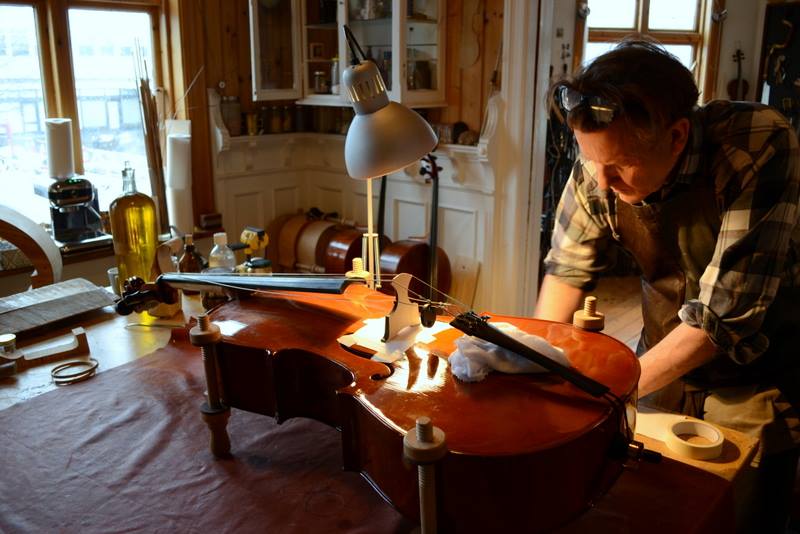
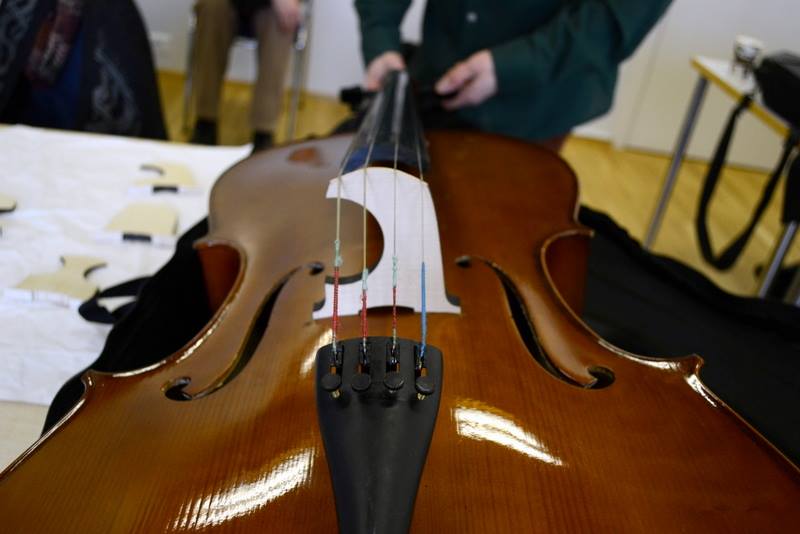
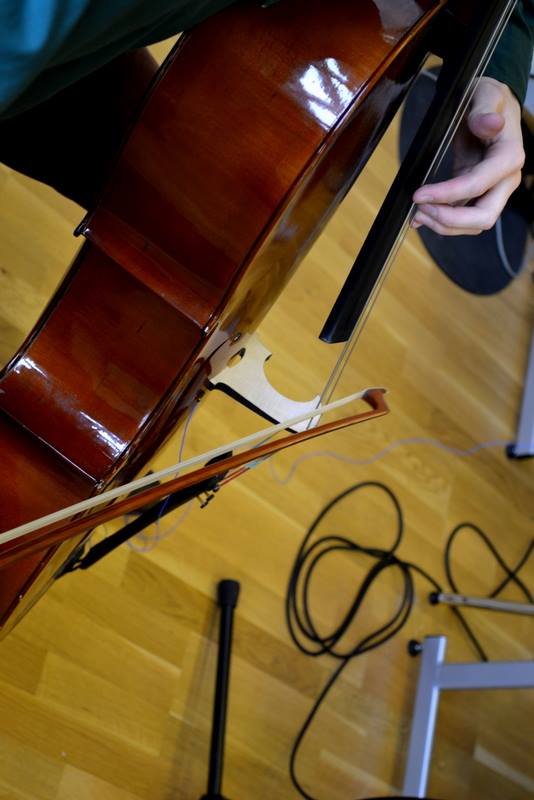
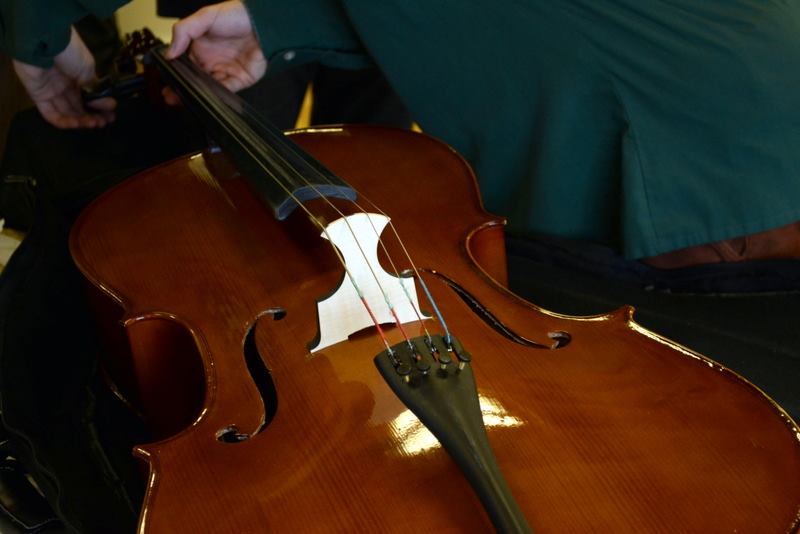
Clarinet barrel
Mapping of pitches possible with the the experimental barrels done, here are mapping of barrel experiment #3 - with silver and leather ligature, and barrel experiment #3-2-1 with silver ligature.
Pitch map of Barrel #3 - with leather ligature
Pitch map of Barrel #3 - with silver ligature
Pitch map of Barrel #3-2-1 - with silver ligature
Resonant spaces
Halldór Kristinn Júlíusson lectured on acoustics and acoustic treatment in spaces.
Reports on projects
Resonating spaces and room acoustics
Report regarding the use of rooms in terms of coloring sound in itself.
Report by Hannes Einpaul
Experimental clarinet barrels
Report regarding the tryouts with designing clarinet barrels.
Report by Stefán Ólafur Ólafsson and Þorkell Nordal - [only in Icelandic]
Experimental cello bridges
Report on the experimental cello bridge designs made in the course.
Report by Örnólfur Eldon Þórsson and Örn Ýmir Arason - [only in Icelandic]
Study for experimental clarinet barrels
Study for experimental barrels
Composer Þorkell Nordal wrote a short work for clarinet that were recorded by using 4 kinds of different barrels, first using the barrel #6-1, which is in the shape of a standard barrel, but only longer. #3-2-1 which affects the timbre of the instrument, #2 which overwrites the function of the fingerings and a standard barrel. It's possible to listen below.
Study for clarinet by Þorkell Nordal
Study for experimental barrels
Study for Clarinet by Þorkell Nordal - using experimental barrel #6-1
Study for Clarinet by Þorkell Nordal - using experimental barrel #3-2-1
Study for Clarinet by Þorkell Nordal - using experimental barrel #2
Study for Clarinet by Þorkell Nordal - using a standard barrel
Study for experimental cello bridges
Study for experimental cello bridges
Composer Örn Ýmir Arason wrote a short work for cello that were recorded in 2 versions, the experimental bridge R1 and the other version by using experimental bridge marked 0. The tuning of the instrument is not the same between recording. It's possible to listen below.
Study for cello by Örn Ýmir Arason
Study using cello bridge "R1"
Study for Cello by Örn Ýmir Arason - using experimental bridge R1
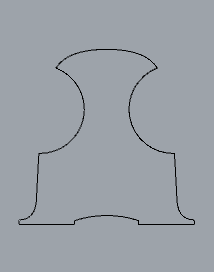
Cello bridge "R1"
Study for Cello by Örn Ýmir Arason - using experimental bridge R1 - [Audio only]
Study using cello bridge "0"
Study for Cello by Örn Ýmir Arason - using experimental bridge 0
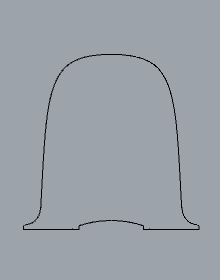
Cello bridge "0"
Study for Cello by Örn Ýmir Arason - using experimental bridge 0 - [Audio only]